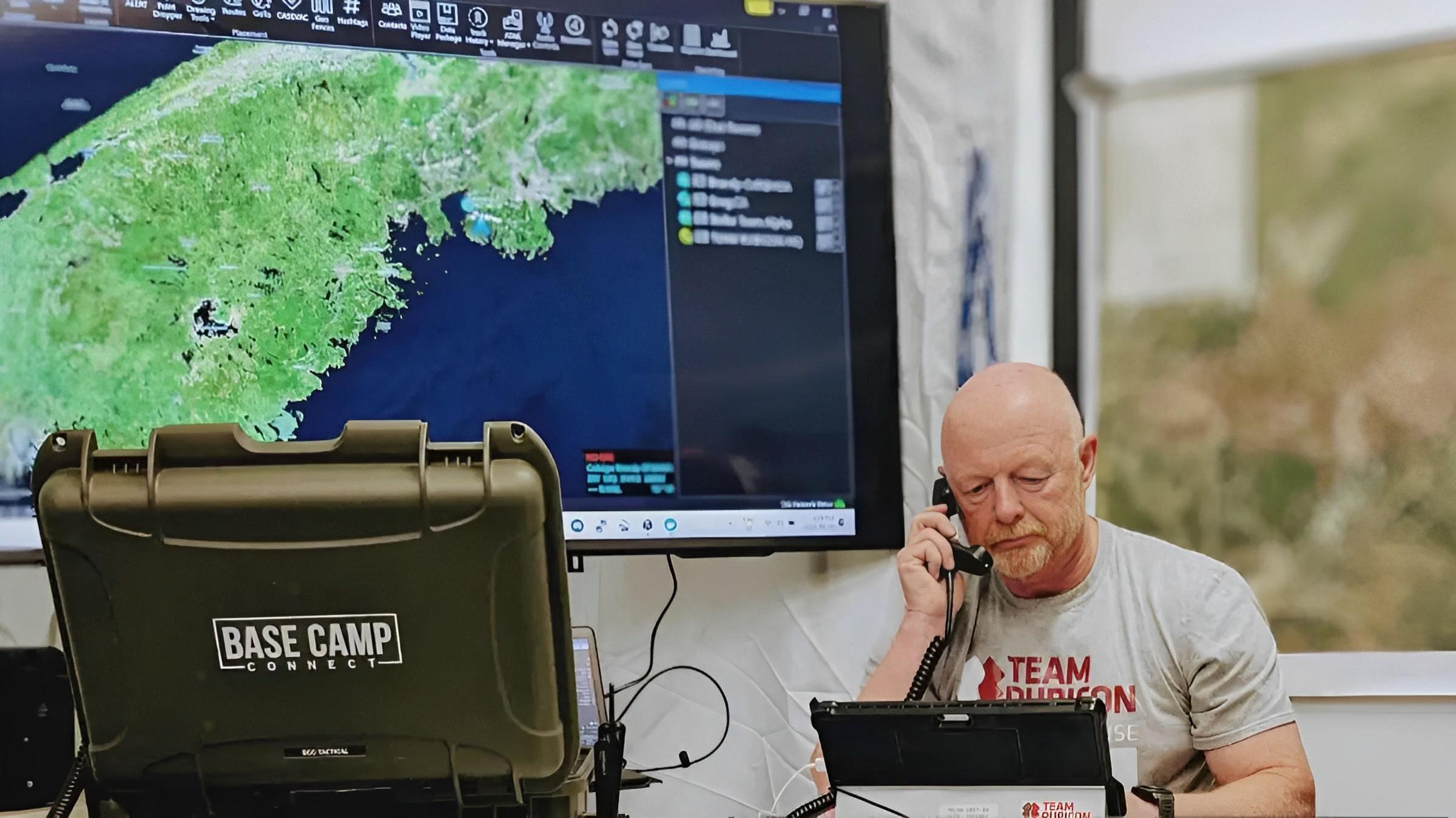The defense and emergency communication industries play critical roles in safeguarding the welfare and security of a country’s citizens. Most people spend less time thinking about our communications capabilities than they probably should. The behind the scenes activities of these industries are vital to a nation’s security. Working together, these industries are responsible for providing dependable communication infrastructure to military service members, first responders, and emergency services personnel.
The work taking place in these sectors is easy to ignore. What must be addressed, regardless of one’s familiarity with these sectors, are the obstacles they are currently facing. These challenges include cybersecurity, interoperability, spectrum availability, aging infrastructure, and funding, to name just a few. Identifying these significant challenges and how to address them is vital.
Cybersecurity
As the world moves further into the fourth industrial revolution, cybersecurity has become a significant challenge for various industries, especially the defense and emergency communication sector. Cyberattacks are becoming more sophisticated every day, making it difficult for governments and organizations to secure networks and infrastructure.
Recent events have shown the power of cyberattacks. Utilities such as fuel have been restricted and held for ransom, leaving citizens in a panic and governments with limited options for recourse.
Attacks on communication networks can have severe consequences. This is especially true if they occur during a national defense or natural disaster event. A successful attack on communication infrastructure can prevent first responders from working together and military units from maximizing the synergies of their combined capabilities.

Additionally, cyberattacks can provide attackers with sensitive information. This data can be used for further attacks or to exploit the target in other ways.
Combating this significant threat requires making cybersecurity a priority. Some proven measures worth investing time and resources into include regular vulnerability assessments, well-developed cybersecurity policies, and active monitoring of communication networks. When done correctly, these activities detect and prevent cyberattacks before they cause significant damage.
Another point worth mentioning is the need to train an organization’s members on all things related to cyberattacks. Regular training and awareness programs for personnel can also foster a culture of cybersecurity, where everyone understands the risks and plays their part in maintaining a secure network. By developing a culture of cybersecurity, many attacks can be prevented.
Interoperability
If every government and private agency used the same equipment for their communications needs, interoperability would not be a challenge facing the defense and emergency communication industries. As we all know, this is not the case. A wide range of different agencies owns communications networks, equipment is varied even within the same organization, and many agencies use different technologies and protocols.
The plethora of different networks and equipment presents an interoperability problem in an emergency or national defense situation. Thankfully, there are innovative solutions to bridge interoperability gaps. Even so, a push toward great interoperability is still a necessity.

Addressing the problem of interoperability requires technological solutions and cooperation. Governments and other stakeholders must develop standards and procedures that can be adopted by organizations and communications technology manufacturers. It is also crucial that governments invest in technology that aids in bridging the gaps caused by equipment that doesn’t work well together.
Spectrum Availability
Spectrum availability is a critical issue that the defense and emergency communication industry must address to ensure reliable and effective communication capabilities. The radio spectrum, a range of frequencies used for wireless communication, is not infinite, and as more devices and networks become connected, the spectrum is becoming increasingly congested. This congestion can lead to interference and other problems, severely impacting communication networks’ performance.
Governments must take action to address this issue by allocating more spectrum to the defense and emergency communication industry. It is not enough to rely solely on spectrum allocation to address the spectrum scarcity problem. Innovative solutions, such as cognitive radio and dynamic spectrum access technologies, are needed to use the existing spectrum more efficiently.
Cognitive radio can intelligently and automatically adapt to changes in the wireless spectrum environment, allowing for more efficient use of the available spectrum. Similarly, dynamic spectrum access allows for unused or underutilized spectrum to be allocated to the highest priority applications, providing flexibility and spectrum access when needed.

By working with the private sector to develop these technologies and allocate more spectrum, the defense and emergency communication industries can ensure they have access to the spectrum they need to function effectively. The deployment of these technologies and cooperation can help address the challenges of spectrum availability and significantly impact the reliability and effectiveness of communication networks.
Aging Infrastructure
The defense and emergency communications industries rely on dependable and sufficient infrastructure to ensure critical communications are transmitted promptly. As this infrastructure ages, it becomes increasingly vulnerable to failure and may hinder the ability to respond effectively to emergencies or other threats.
In the defense industry, outdated infrastructure can lead to delays in transmitting critical information, and thus compromise the ability of military personnel to make time-sensitive decisions. Similarly, aging infrastructure in the emergency communications industry can slow emergency response times, which can have life-threatening consequences. Upgrading infrastructure in these industries is essential to ensuring they can operate efficiently and effectively. Governments need to modernize communication infrastructure, which includes upgrading legacy systems and investing in new technologies such as 5G networks. Additionally, it is necessary to build redundancy and diversity in communication channels.

Without layers of redundancy, natural disasters can cripple a system and threats can take advantage of single points of failure. Governments and private sector players should work together to develop innovative solutions that can address the unique needs of these industries.
Funding
Funding is another significant issue affecting the defense and emergency communication industries. Military personnel, first responders, and emergency services personnel depend on these industries to keep us safe. Developing and maintaining the equipment, infrastructure, and policies that support these industries requires significant investment.
These industries will suffer from outdated equipment and inadequate infrastructure without adequate funding. The safety and security of citizens will be compromised if this preventable catastrophe occurs.
Governments are increasingly interested in reducing spending to address budget deficits in the current economic climate. As the global economy teeters on a potential recession, many countries are reducing defense and emergency communication budgets.
Governments must allocate more funding to the defense and emergency communication industries to overcome this challenge. They should also explore new funding sources, such as public-private partnerships, to ensure the sector has access to the resources it needs to function effectively. While cutting budgets in this area may seem easy, the short-term gain does not warrant the long-term problems a lack of funding will create.
The defense and emergency communication industries are essential for ensuring the safety and security of a nation’s citizens. These industries provide reliable communication infrastructure to military personnel, first responders, and emergency services personnel. In recognition of the importance of these services we must understand that these industries face significant challenges. Cybersecurity, interoperability, spectrum availability, aging infrastructure, and funding issues all must be taken seriously.
It is essential to address these challenges and ensure the defense and emergency communication industries continue to serve their purpose. Understanding and addressing these challenges ensures these critical industries are equipped to keep us safe and secure. We must pay more attention to the behind-the-scenes work of these industries and support them in their efforts to protect us.
* Main blog image source : Global News video interview with Bryan Riddell, showcasing the BCC-Tactical in use during a Team Rubicon operation-Veteran. Video Title: led Humanitarian Organization Discuss Wildfire Relief Efforts. June 28, 2023. URL: https://globalnews.ca/video/9798604/veteran-led-humanitarian-organization-discuss-wildfire-relief-efforts
Have you enjoyed this article? Be sure to subscribe to our blog to catch the next one as soon as we publish!














